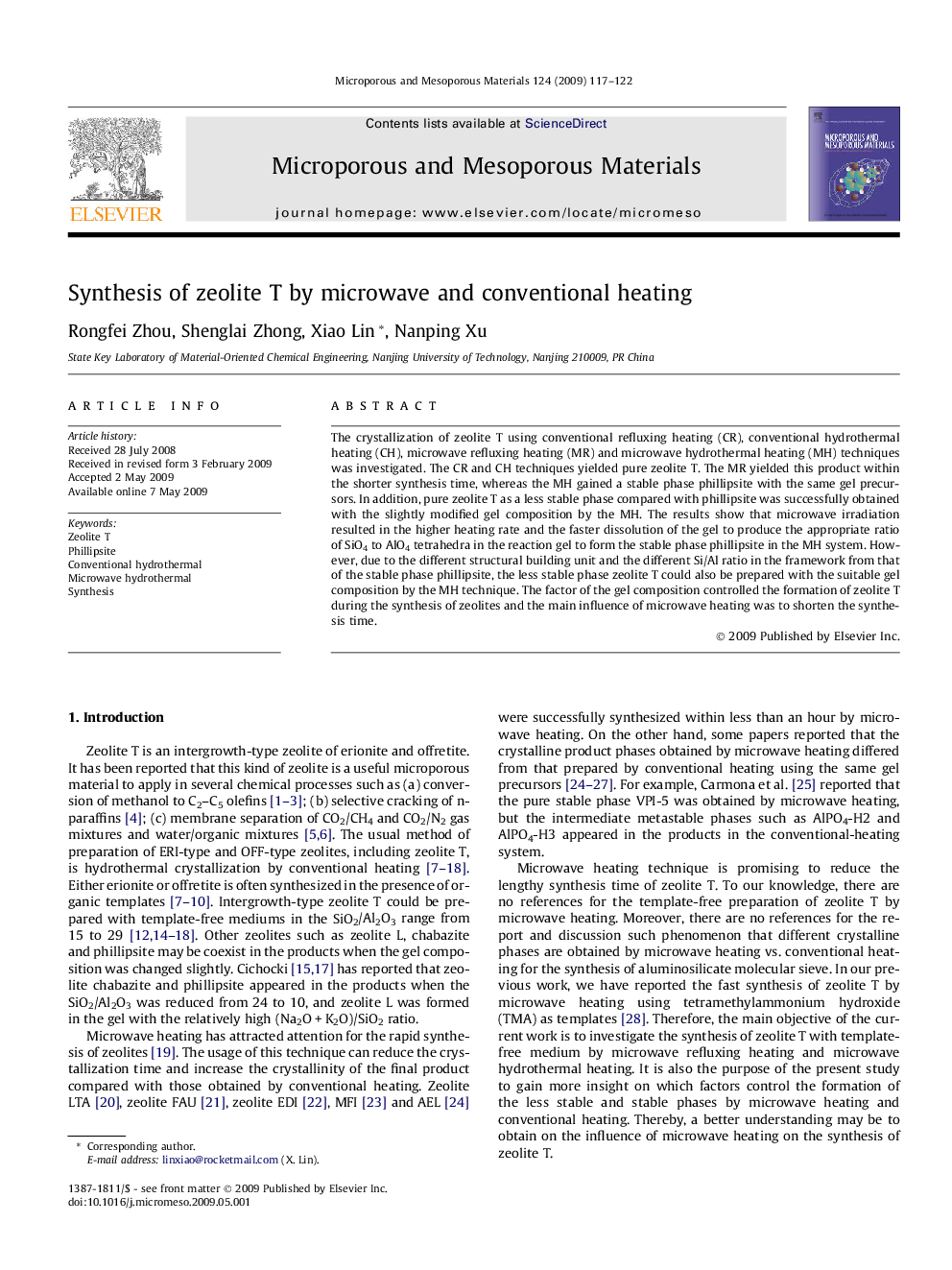| Article ID | Journal | Published Year | Pages | File Type |
|---|---|---|---|---|
| 74715 | Microporous and Mesoporous Materials | 2009 | 6 Pages |
The crystallization of zeolite T using conventional refluxing heating (CR), conventional hydrothermal heating (CH), microwave refluxing heating (MR) and microwave hydrothermal heating (MH) techniques was investigated. The CR and CH techniques yielded pure zeolite T. The MR yielded this product within the shorter synthesis time, whereas the MH gained a stable phase phillipsite with the same gel precursors. In addition, pure zeolite T as a less stable phase compared with phillipsite was successfully obtained with the slightly modified gel composition by the MH. The results show that microwave irradiation resulted in the higher heating rate and the faster dissolution of the gel to produce the appropriate ratio of SiO4 to AlO4 tetrahedra in the reaction gel to form the stable phase phillipsite in the MH system. However, due to the different structural building unit and the different Si/Al ratio in the framework from that of the stable phase phillipsite, the less stable phase zeolite T could also be prepared with the suitable gel composition by the MH technique. The factor of the gel composition controlled the formation of zeolite T during the synthesis of zeolites and the main influence of microwave heating was to shorten the synthesis time.
